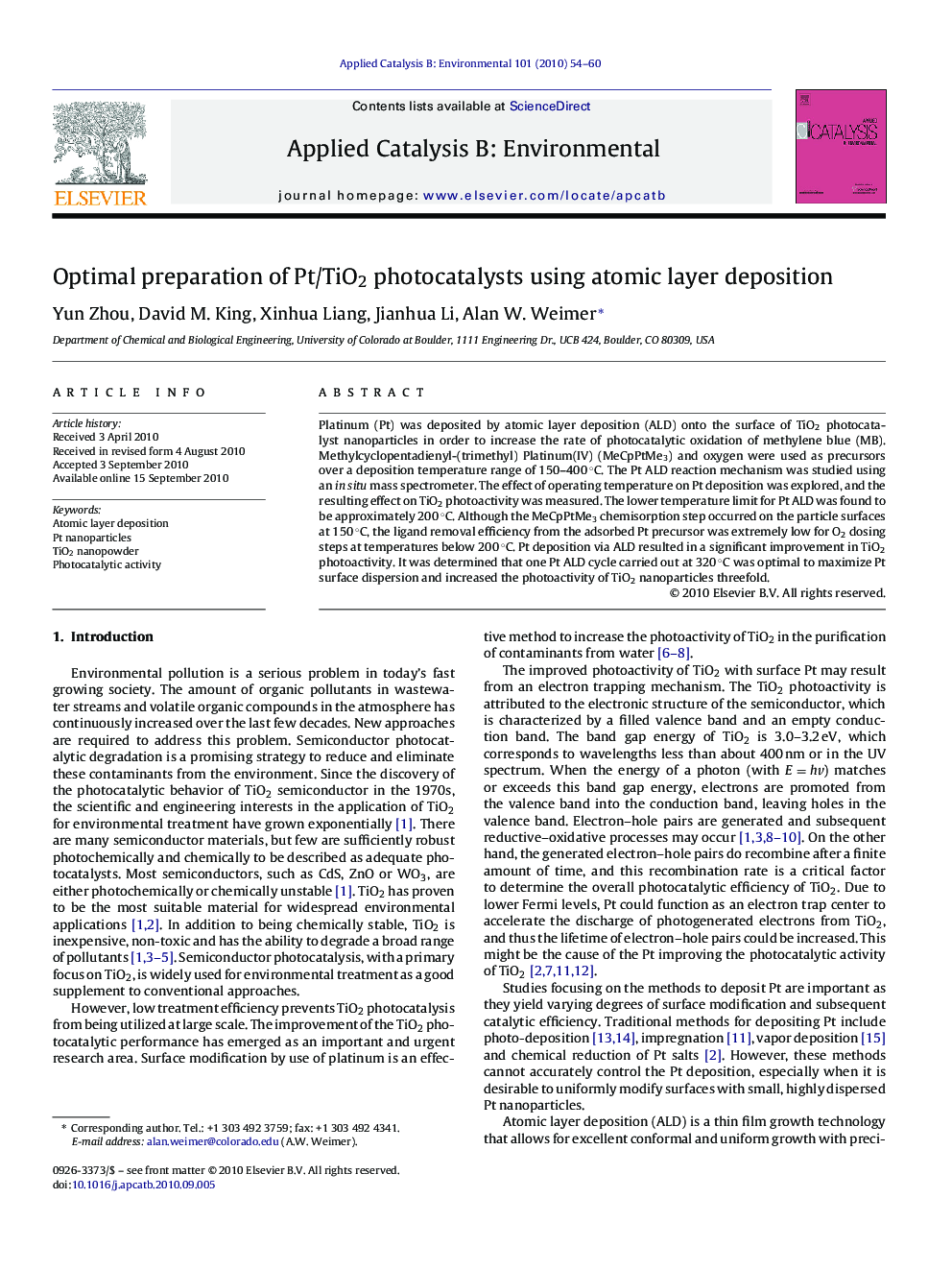| Article ID | Journal | Published Year | Pages | File Type |
|---|---|---|---|---|
| 47080 | Applied Catalysis B: Environmental | 2010 | 7 Pages |
Platinum (Pt) was deposited by atomic layer deposition (ALD) onto the surface of TiO2 photocatalyst nanoparticles in order to increase the rate of photocatalytic oxidation of methylene blue (MB). Methylcyclopentadienyl-(trimethyl) Platinum(IV) (MeCpPtMe3) and oxygen were used as precursors over a deposition temperature range of 150–400 °C. The Pt ALD reaction mechanism was studied using an in situ mass spectrometer. The effect of operating temperature on Pt deposition was explored, and the resulting effect on TiO2 photoactivity was measured. The lower temperature limit for Pt ALD was found to be approximately 200 °C. Although the MeCpPtMe3 chemisorption step occurred on the particle surfaces at 150 °C, the ligand removal efficiency from the adsorbed Pt precursor was extremely low for O2 dosing steps at temperatures below 200 °C. Pt deposition via ALD resulted in a significant improvement in TiO2 photoactivity. It was determined that one Pt ALD cycle carried out at 320 °C was optimal to maximize Pt surface dispersion and increased the photoactivity of TiO2 nanoparticles threefold.
Graphical abstractFigure optionsDownload full-size imageDownload as PowerPoint slideResearch highlights▶ Uniform and well dispersed Pt nanoparticles can be deposited on commercial TiO2 nanopowders via the atomic layer deposition (ALD) method. ▶ One cycle of Pt ALD carried out at 320 °C is optimal, yielding a threefold improvement in the photoactivity of TiO2. ▶ One cycle of Pt ALD carried out at 320 °C produced a Pt loading of 0.64 wt% on the TiO2 substrate of ∼50 m2 g−1. ▶ The lowest temperature suitable for Pt ALD using (MeCp)Pt(Me)3 and O2 as precursors is approximately 200 °C, limited by the O2 combustion step.
